2026 Author: Priscilla Miln | [email protected]. Last modified: 2025-01-22 17:55:21
Despite the fact that the coaster is just a piece of utensil, for many people it evokes romantic associations. A long road, the sound of wheels, the conductor brings tea in cupronickel coasters. Or: an old estate, a puffing samovar, a vase with freshly brewed jam, a glass holder with fragrant herbal tea. This seemingly utilitarian item has a personality and character of its own that transforms a simple tea party into something special.
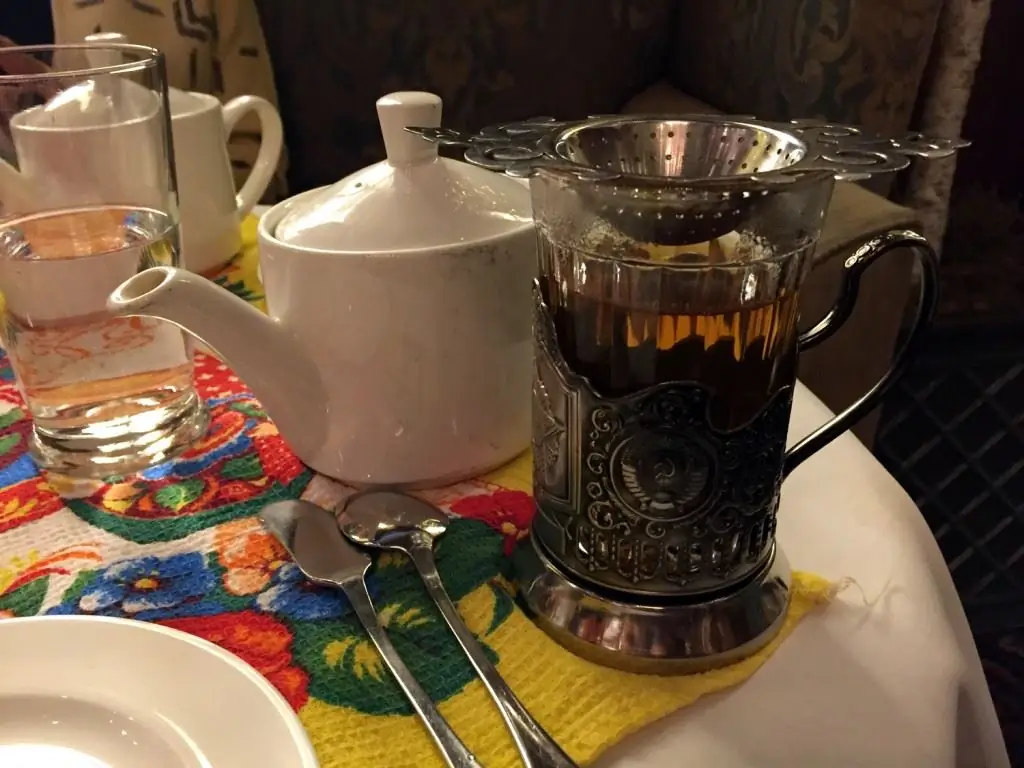
History of the coaster
In the middle of the nineteenth century, Alexandre Dumas wrote in his “Great Culinary Dictionary” that in Russia men traditionally drink tea from glasses, and women from Chinese cups. To explain this fact, he cites an amusing legend: the owners of coffee houses often brewed tea so weakly that through it one could see the bottom of the cup with the image of Kronstadt on it (because inat that time, cups were made in this city). Noticing that “Kronstadt is visible”, the men began to accuse the owners of cheating, so the cafe owners decided to pour tea for the men into glasses, at the bottom of which nothing could be seen.
Another possible explanation for this fact could be the frequent traveling of military men: it was inconvenient and expensive to carry chinaware because of its fragility. One way or another, men began to drink tea, mainly from glasses, and in order not to burn themselves on hot glass, a removable metal stand with a handle was invented. The fact that the cup holder was originally designed exclusively for the male hand explains its massive shape and wide handle. Most likely, coasters appeared in Russia at the end of the eighteenth century and at first performed a utilitarian function, without demonstrating any artistic delights.
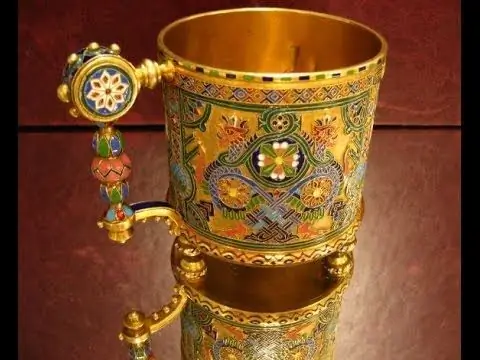
Nineteenth century teacup holder
In the second half of the nineteenth century, the coaster ceases to be just a piece of utensils and becomes a piece of art. The best jewelers work on them; various techniques are used in their manufacture: casting, chasing, stamping; We althy people order coasters decorated with multi-colored enamel or stones. There is a huge variety of forms of coasters and scenes depicted on them, reflecting the existing fashion and interests of people.
their main wholesale buyer is the Ministry of Railways. Most likely, the reason is that with them the glass becomes more stable, which helps a lot while the train is moving. However, at that time these were not cupronickel coasters familiar to us: at that time they were most often made of brass - for the common people, and silver - for the aristocracy, and in special cases - of gold.
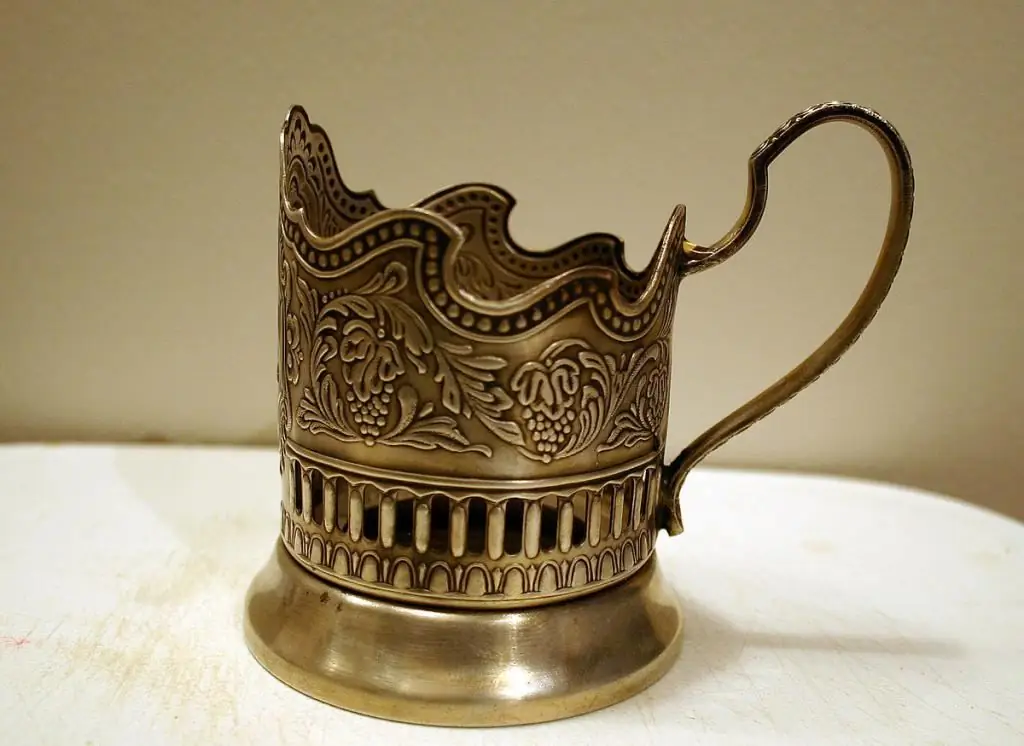
Cup holders in the Soviet Union
In the USSR, the production of glass holders at first ceased, but in the twenties it began again, and utensils found a new birth. Perhaps this was due to the greater spread of glassware instead of porcelain or faience. Cupronickel coasters begin to be produced after the end of the Great Patriotic War. Cupronickel is an alloy of copper and nickel, similar in appearance to silver, but more resistant to temperature fluctuations. In the USSR cupronickel coasters were quite expensive and were considered a luxury. A characteristic feature of the appearance of Soviet coasters is their ideological charge. Often they are decorated not with neutral floral ornaments, but with Soviet symbols, the faces of party leaders, pictures of the surrounding life: workers and peasants, tractor drivers; thematic series dedicated to famous personalities or significant events were also produced. In the era of space exploration, space satellites, rockets, astronauts were depicted on cup holders.
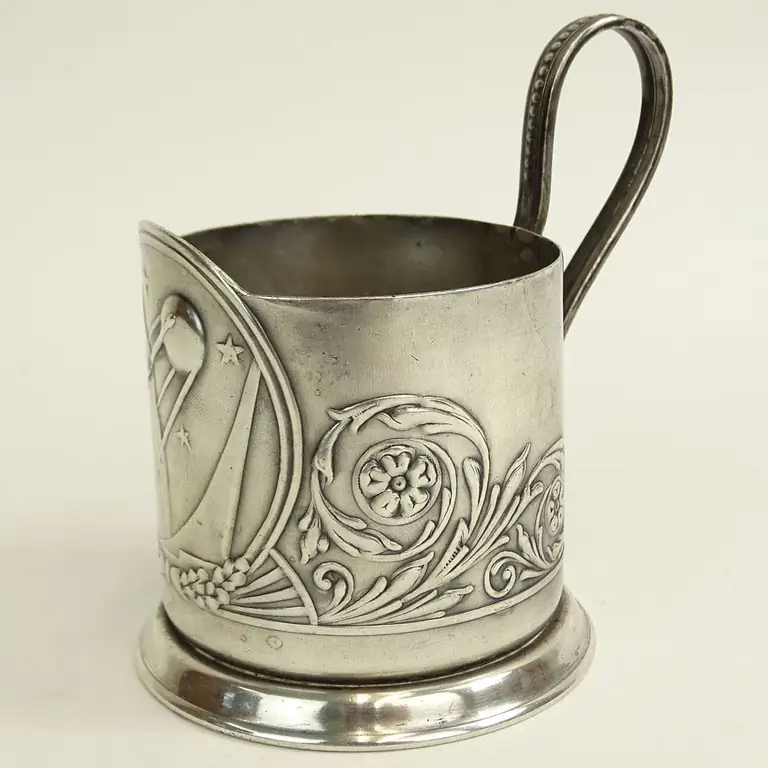
Cup holders today
Now coasters are an itemcollectibles. For some, this is a nostalgic souvenir from the Soviet past, for some it is an item of traditional Russian life, and someone is attracted by their appearance, variety of shapes and images. Cupronickel coasters can be given as a souvenir to an antique lover or a foreign friend, used in the interior of the kitchen, or just drink tea from a glass in them. They can be found in antique shops, flea markets, as well as on mezzanines and closets. The price of cupronickel coasters from the Soviet period can vary from a few rubles to tens of thousands, depending on how rare it is.
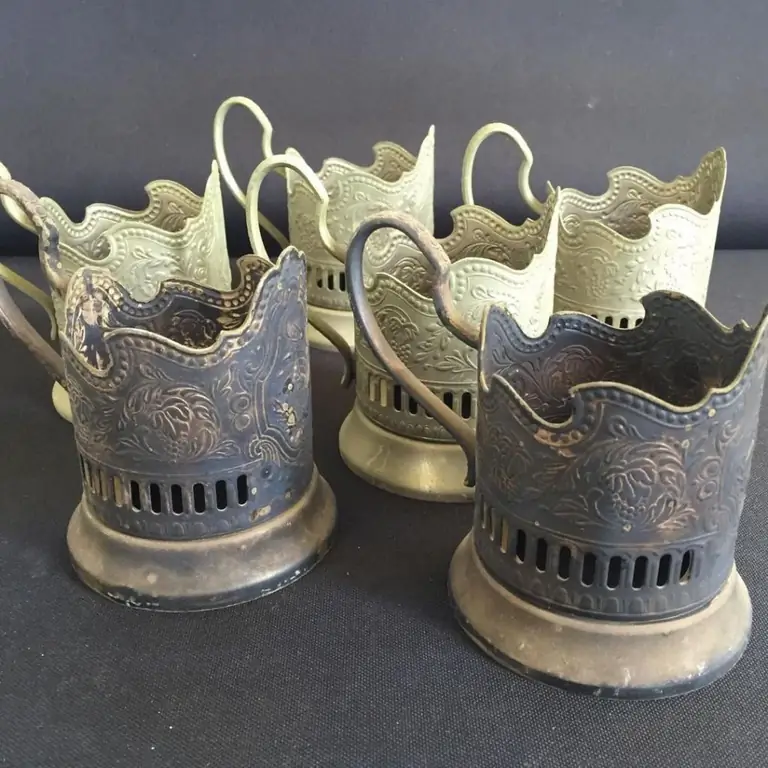
How to care
Melchior is not the most capricious metal, but in order for it to please with its brilliance, it needs to be looked after. After use, cupronickel coasters should preferably be washed in a soda solution (two tablespoons of soda per liter of water), and after washing, they must be wiped dry so that the dried drops do not leave dark spots on the surface. Over time, cupronickel darkens, and it is necessary to remove the top layer of oxidized metal so that it takes on its original form.
To clean cupronickel cup holder, it is better to take a special jewelry paste to restore the shine of silver. If there is no opportunity to purchase it, then you can use one of the methods that were used in everyday life when these jewelry had not yet been invented.
One of the old ways to clean glass holders is to rub it with a piece of suede soaked in vodka and sprinkled with chalk. You can also hold them in water with dissolved ammonia (or vodka, or vinegar). Another way is to boil coasters in potato broth. It is better not to rub cupronickel with abrasive products (for example, tooth powder and paste, soda), because this will cause small scratches and the corrosion process will go faster.
Recommended:
Bohemian crystal: history and modernity

Bohemian crystal - how much in this definition… It is enough to hear it, and immediately the imagination draws aristocratic receptions and the clink of glasses. What kind of dishes can actually be called this term and how does it differ from everything else?
History of New Year's toys in Russia. The history of the emergence of New Year's toys for children

Christmas toy has long become an integral attribute of one of the main holidays of the year. Many houses have magic boxes with bright decorations, which we carefully store and take out once a year to create a long-awaited fairy-tale atmosphere. But few of us thought about where the tradition of decorating a fluffy Christmas tree came from and what is the history of the origin of the Christmas tree toy
Day of the Baptism of Russia on July 28: modernity and historical milestones of Orthodoxy

Recently celebrated on July 28, the Day of the Baptism of Russia is not among the famous and well-known religious celebrations. But the young holiday is becoming more and more famous, strengthening in the public mind the idea of the origins of our culture and the traditions of our ancestors
Turkish weddings: modernity and ancient rites

Turkish Ahiska weddings are especially strict in their customs: even the verbal formulas for each ceremony are strictly in accordance with the Koran. Three times, first the groom's relatives, and then the bride's relatives, loudly announce the upcoming engagement
Kabardian weddings: traditions and modernity

Kabardian weddings today are not only joy and a beautiful sight. These are ongoing disputes, and sometimes conflicts. The fact is that a traditional action that fully corresponds to ancient customs should last more than one year

